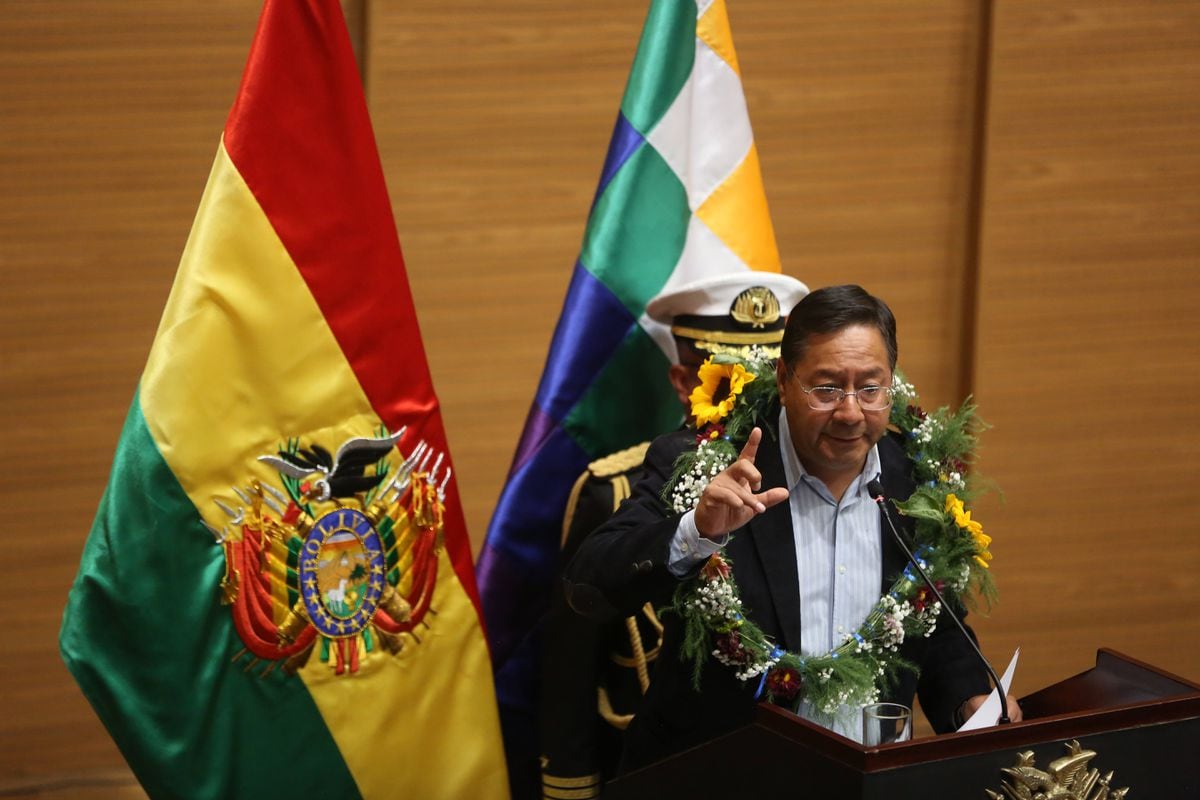Bolivian politicians usually spend the carnival at the big festivals that are organized around this time, but this year the government spokespersons had to work.
They had the mission of calming the population's general alarm about the economic situation, after a week full of problems and bad news.
The worst of President Luis Arce's three-year administration.
The bell was given by the risk rating agency Fitch Ratings, which lowered the Bolivian debt in sovereign bonds from “B-” to “CCC”, that is, it passed it, within the “non-investment grade” scale, from a “variable” security to “vulnerable”.
The company made it known that “it is rare” for bonds issued by a country to obtain such a low rating.
And he justified his decision, which the Bolivian Government considers unfair, due to the lack of international currency reserves that the country suffers.
The real level of reserves is unknown, since the Central Bank of Bolivia (BCB) has not kept the information updated since, exactly one year ago, there was an “unusual demand” for dollars and the banks began to ration the US currency.
At that moment, the public's expectations changed, and they began to accumulate dollars and sell them at a higher price than the official price of 6.96 bolivianos per unit.
According to a private study, the BCB effectively has around $340 million, discounting the gold it owns but is not authorized to sell.
This figure is not even enough to cover one month of imports of goods from abroad.
The country has no where to get the foreign currency it needs.
In 2023, its imports were higher than its exports by 585 million dollars, mainly due to the debacle of its hydrocarbon industry and the need that this has created for it to import fuel each year for more than 3,000 million dollars.
In this context, there is nothing left but to use the dollars that are in the hands of the population, which are estimated to amount to 10,000 million.
So, inevitably, the price of the dollar in the parallel market has been rising.
It is currently above 8 bolivianos, which represents a de facto devaluation of 15%.
The price is even higher for importers, who need large sums to carry out their operations.
As banks are prohibited from selling them at a higher exchange rate than the official one, they charge them “commissions” that are between 15 and 25% of the amount demanded.
The shortage of dollars and the new prices of the greenback have begun to affect the purchasing capacity of importers.
In a statement that caused fear, the Bolivian Pharmaceutical Chamber warned that the shortage of dollars “can affect in a short time the normal supply of medicines and medical devices in the country, since production and import are becoming more expensive and we run the risk of that suppliers suspend their provisions due to lack of payments.”
Other business sectors have also expressed concern about the future of their businesses.
The most serious problem, however, must be solved by the Government, which is obliged to support a completely nationalized fuel market with fixed and subsidized prices.
The failures in the supply of gasoline and diesel generated by the lack of foreign currency are constant and periodically cause panic among consumers, who form endless lines at service stations.
Despite everything, inflation remains very low, 3% annually, a figure to which the Government's communication apparatus clings.
The financial system is also safe, because the vast majority of its operations are carried out with the national currency.
Bolivia has relatively little debt, so in theory it could resort to credit to compensate for its current financing deficit, but the task is not easy.
The country risk, established in ratings such as Fitch's, makes the cost of the new bonds that could be issued prohibitive.
In any case, the Government is studying how to do it.
Regarding credits from other countries and multinational organizations, more than 800 million dollars already committed are detained in the Legislative Assembly, where the ruling party does not have the necessary majority to approve them.
The opposition is blocking them from getting various political problems resolved.
On the other hand, it is unthinkable that the leftist Luis Arce would ask the International Monetary Fund for help.
In order to somewhat remedy the situation, the financial authorities are taking advantage of the fact that national miners produce about 50 tons of gold a year to buy the metal from them and add it to the reserves.
They hope to acquire gold for about $500 million in 2024. The Fitch report finds that the information that exists about this strategy is insufficient.
Internally, there are doubts that the BCB is capable of monetizing too much gold, since, to do so, it must be certified through a cumbersome procedure.
Several economists believe that, at this rate, the dollar will cost 10 bolivianos by the end of 2024, a devaluation of 30%.
Follow all the international information on
and
X
, or in
our weekly newsletter
.

